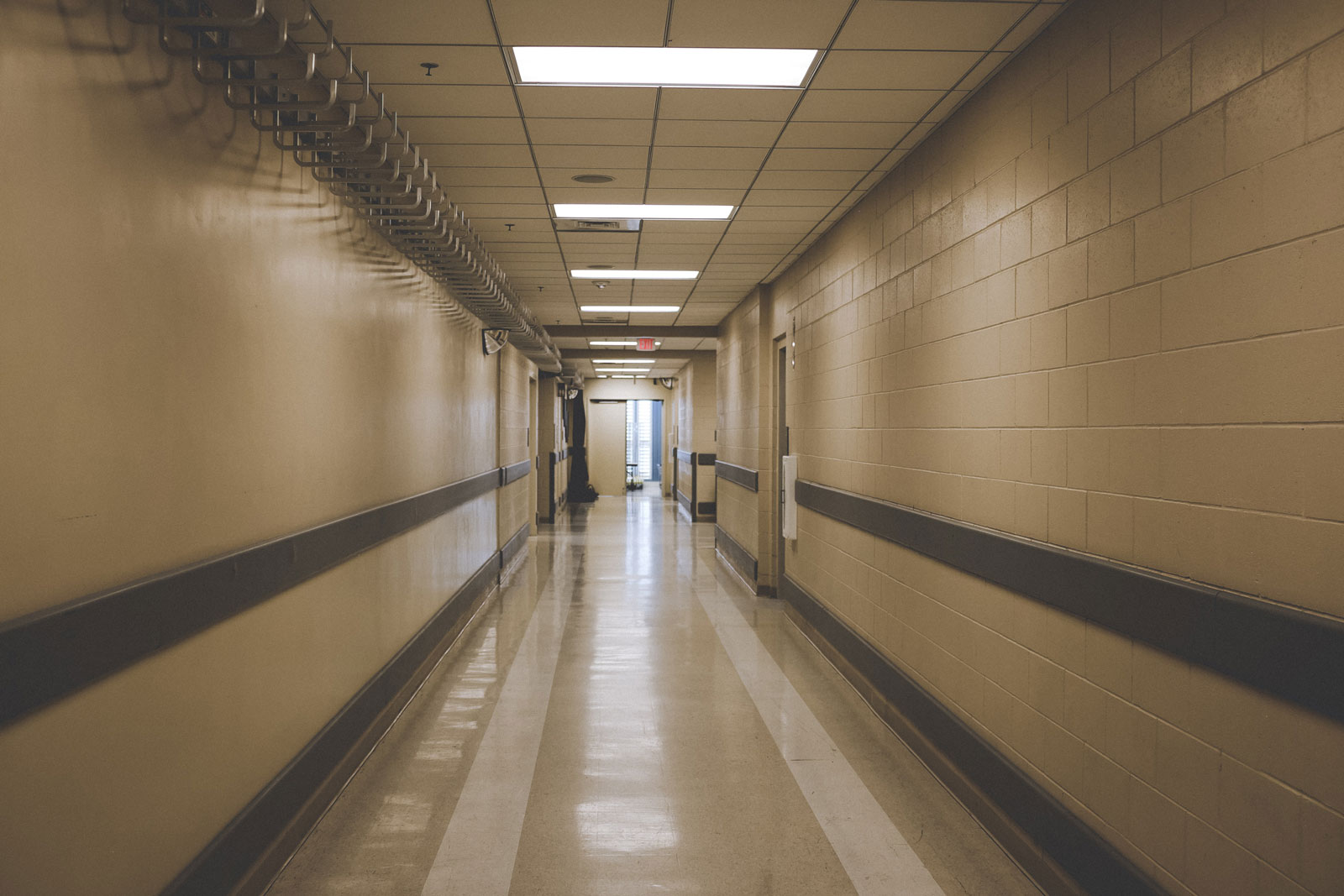What is the Program?

The overdose prevention site (OPS) at St. Paul’s Hospital (operated by Providence Health Care) offers a non-judgmental and safer place to use drugs in the West End of Vancouver. In addition to overdose management and monitoring, the OPS offers a variety of harm reduction services (e.g., sterile injection supplies, safe disposal of needles, drug testing). The OPS is located on the grounds of St. Paul’s Hospital and serves hospital inpatients as well as members of the West End community.
Vancouver Coastal Health (VCH), the local health authority, funds the project through funding available in response to the overdose crisis. VCH contracts with RainCity Housing for the day-to-day management of the site, as RainCity has previous experience running an OPS in Vancouver.1 Providence Health Care provides the space on the hospital grounds as well as facilities management (e.g., garbage disposal).
The OPS opened on May 8, 2018, and is the first OPS in Vancouver outside of the Downtown Eastside. The site originally opened in a walled tent in a St. Paul’s Hospital parking lot and has since moved into the basement of a building on the St. Paul’s Hospital campus.
- RainCity Housing provides innovative, specialized housing and support services for people living with mental illness, addictions and other challenges. Peer work is embedded throughout the organization and harm reduction is a core value of their work: http://www.raincityhousing.org/what-we-do/
Why Was the Program Developed?
British Columbia, like many parts of Canada, is in the midst of an opioid overdose epidemic. In BC, there were over 1,400 deaths in 2018 due to opioid overdoses.1 Given that a high percentage of inpatients at St. Paul’s Hospital were actively injecting substances and there had been multiple overdoses within the hospital, it was determined that the hospital campus would be a good site for an OPS.
St. Paul’s Hospital (operated by Providence Health Care) developed the OPS in partnership with RainCity Housing to serve St. Paul’s Hospital inpatients as well as the local West End community.
- British Columbia Coroners Service. Illicit Drug Overdose Deaths in BC: January 1, 2009 – March 31, 2019. https://www2.gov.bc.ca/assets/gov/birth-adoption-death-marriage-and-divorce/deaths/coroners-service/statistical/illicit-drug.pdf
How Does the Program Work?
The OPS currently operates out of a room in the basement of a building on the St. Paul’s Hospital campus. People can visit the site between 11:00 am and 11:00 pm, 7 days a week. Peer workers, support workers and a manager staff the site. A renovation of the OPS space was completed in early 2019 through funds supplied by Providence Health Care. Inpatients can find the site using signage within the hospital and through hospital staff. The OPS has been publicized outside of St. Paul’s Hospital largely through word of mouth.
Approximately one-quarter of the OPS participants are hospital inpatients. A variety of services are provided. OPS staff are trained in first aid and advanced overdose management techniques (e.g., administration of naloxone, administration of oxygen, rescue breathing). Staff monitor overdoses and call emergency services, if required. The OPS site offers the following services:
- overdose management and intervention
- take-home naloxone kits and training — the site is a registered Take Home Naloxone satellite site and all staff (i.e., peers and housing support workers) are trained to dispense kits
- access to safer drug supplies including clean injection supplies (e.g., needles, alcohol swabs) and clean inhalation supplies (e.g., stems, screens, bowl pipes), as well as safe needle disposal
- peer support (e.g., filling out housing applications and advocating for clients in the hospital emergency department)
- referrals to health and community services, including referrals to opioid agonist therapy and other treatment (staff are familiar with available resources and referral processes)
- accompaniment or referral to services offered at St. Paul’s Hospital (e.g., the Rapid Access Addiction Clinic, emergency department)
- drug testing via fentanyl testing strips during hours of operation and biweekly scheduled drug testing by the Vancouver Coastal Health Spectrometry Team using a mass spectrometer
The OPS currently offers safer drug use facilities for up to four users at a time, and it is hoped that it will be possible to increase the number of booths from four to six in the near future. The space also includes a desk for staff and an area for users to sit after consumption (i.e., a “chill out” space). There is ongoing work to make the space more inviting for clients.
In a typical visit, a service user will enter the site and obtain the supplies (e.g., needles, alcohol swabs, filters, sterile water, cookers) that they need before proceeding to one of the four booths. Booths include a chair, table and sharps disposal bin. The post-consumption “chill out” space is monitored by staff and provides an opportunity for staff to interact with service users and make referrals to services, if required. There is no time limit on how long service users can stay at the site and the site can be used with a companion.
Some service users visit the site only to obtain supplies and leave. While the site provides safer inhalation supplies, it does not have facilities for safer inhalation on site. If service users want to smoke their drugs, they can obtain supplies and are encouraged to inform staff where they are going. They are then encouraged to check in with staff afterwards.
Peers work six-hour shifts per day, with one or two peers per shift, and support workers have four- or eight-hour shifts, with one support worker per shift. A site manager works 36 hours per week. During operating hours there is at least a one peer and one support worker staff on site. No clinical staff are on site, although OPS staff can call hospital nurses to debrief or ask questions.
Since the OPS is not directly linked to hospital services, discussions with BC Ambulance had to take place to ensure that they were aware of the site and could respond in the case of an emergency.
The start-up cost of the OPS when it was located in the walled tent was approximately $5,000, including the booths, tent, furniture, electrical cords and floor mats. The ongoing monthly total cost for the current (indoor) site is $19,876, most of which is staffing costs.
Required Resources
- Naloxone, oxygen
- Support from the provincial ministry of health
- Funding
- Peer and support workers
- Site manager
- Support from hospital management team
- Space to provide the service (e.g., tent, trailer, room)
- Safer drug use supplies
- Needle disposal services (included as part of hospital services)
Challenges
- Operating in a walled tent was difficult as supplies and furniture were damaged because of exposure to the elements. Clients experienced difficulty using the site in cold weather conditions because of poor circulation. As a result the OPS was moved indoors for the winter months. Determining the most appropriate site for the OPS, whether inside or outside of the hospital, has been a challenge.
- Currently there is no option for safer inhalation services at the OPS, although service users have identified a need for such a service.
Evaluation
Between May 8, 2018, and March 31, 2019, there were 7550 visits in total, 1573 of which were visits from inpatients (21% of total visits).
There have been 18 overdose events, with 16 naloxone administrations and seven transfers to the emergency department.
Lessons Learned
- Creating a welcoming and comfortable environment was an important part of establishing the OPS, and the success of the OPS is largely attributed to the peer workers who staff the site.
- More advocacy is needed to ensure that peers are paid an appropriate wage for the work that they are doing. Making the role of peers clearer, including communicating the breadth and depth of the role and the requirements for advanced training, could assist with advocacy related to fair compensation for peer workers.
- Earlier positive internal promotion and education (i.e., to the broader hospital employee population) related to overdose prevention and the OPS services offered at St. Paul’s would have been useful. It could be beneficial to have staff who are not directly connected to the OPS understand the importance of the site, as well as the positive impacts that it has had on the community.
- It is important to think about future plans early, including plans for space and how to deal with weather challenges if operating outside, especially during the winter months. Having these discussions early could help to enhance communication with partners and procure needed resources and facilities earlier.
- St. Paul’s Hospital had an internal champion for the site who advocated for its establishment with the hospital’s senior management team, which helped achieve support for the initiative. The OPS has the support of the Downtown Vancouver Business Improvement Association and there has been no negative feedback from the surrounding community thus far. Having an internal champion and external support was important in establishing the OPS.
Contact Information
Melissa Nicholson
St. Paul’s Hospital
1081 Burrard Street
Vancouver, BC V6Z 1Y6
Email: Melissa.Nicholson2@vch.ca
Telephone: 604-806-8279

